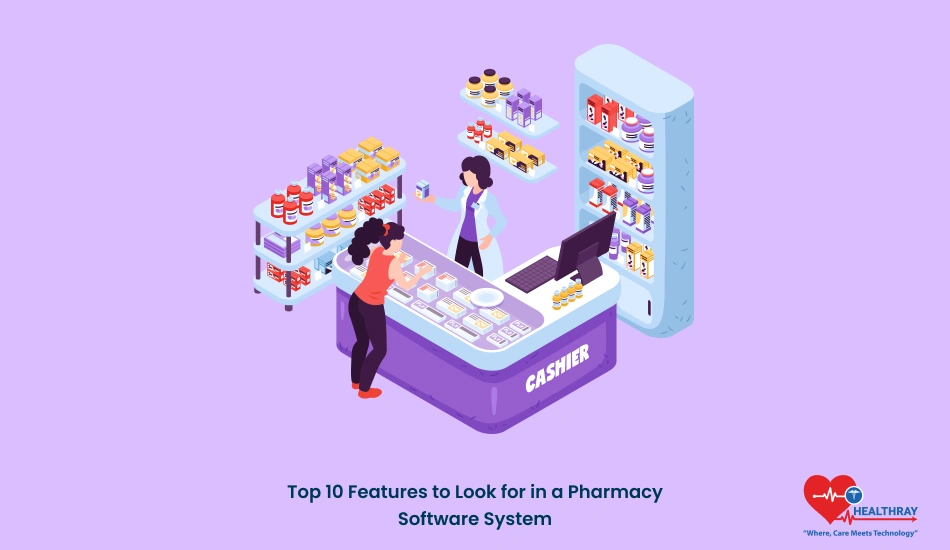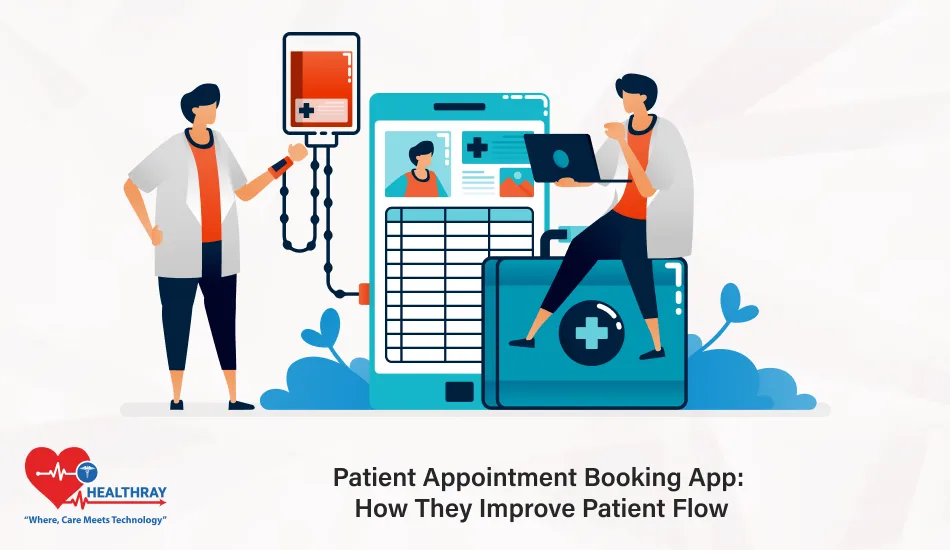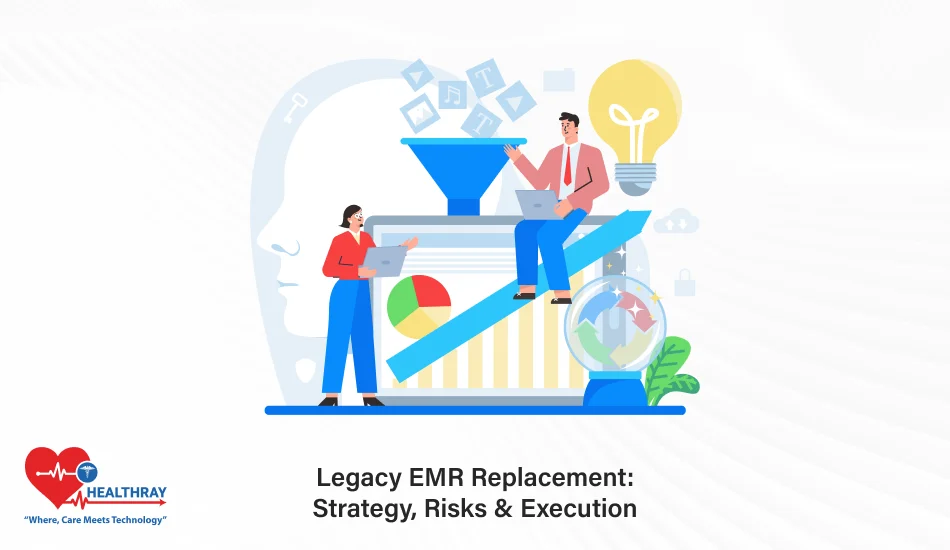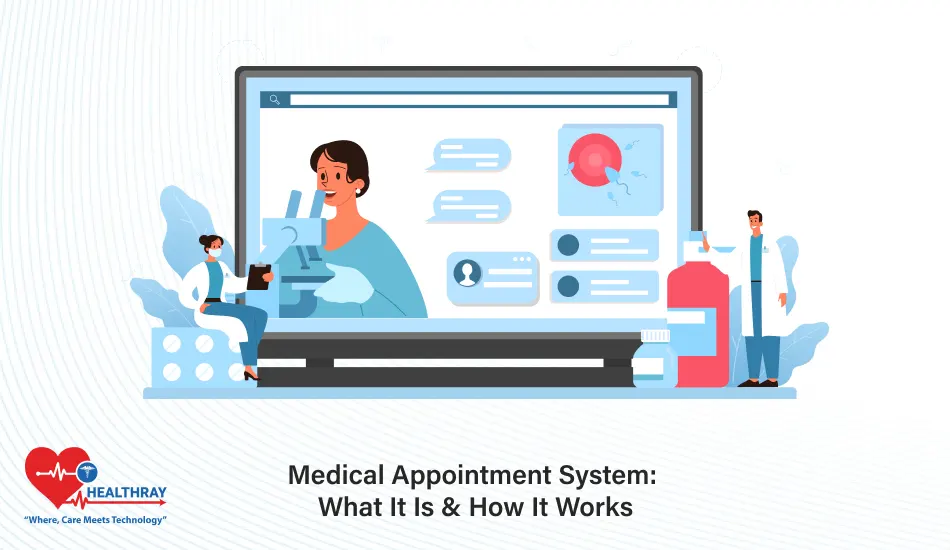Finding the right pharmacy software system can be like trying to navigate through a maze of technical jargon and endless choices. Whether it be an independent pharmacy, a chain of pharmacies, or a hospital pharmacy, your decision on which pharmacy software to use will directly affect your efficiency, compliance, and even patient care.
This guide breaks down the top 10 features to look for in a Pharmacy Management System. We explore how these features will revolutionize your operations, making them smoother, quicker, and even more secure. Stay tuned to find out how to identify the system that best fits your pharmacy’s needs, from customizing workflows for a local pharmacy to integrating systems with a hospital.
Essential Features to Look for in a Top Pharmacy Software System
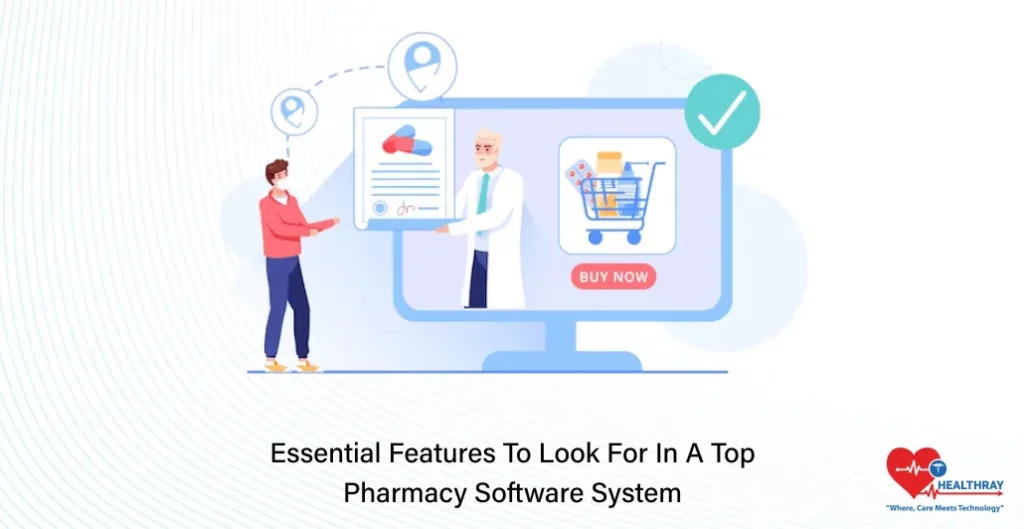
With these functions, you can easily compare the patient engagement features in pharmacy management software; some of their functionalities are similar.
User-Friendly Interface
Any pharmacy software should be intuitively designed. A complicated interface can only delay workflows and increase errors. Find a system that your team will pick up in record time and work with efficiently, sans hours of training. Simple navigation and clean dashboards can save lots of critical time during busy hours.
Inventory Management
Monitoring your inventory is paramount. A fully featured pharmacy software system should deliver updates in real time, provide automated notifications when supplies of something are running low, and give you an overview of fast- and slow-moving drugs. Such tools help you avoid overstocking or running out of essential medicines, keeping your pharmacy in balance both financially and operationally.
E-Prescribing Capabilities
Manual prescription processes are obsolete and bound to have errors. E-prescribing helps you automate the way prescriptions are received and managed. Features such as auto-verification, medication history checks, and refill management make the process speedier and much safer for the pharmacist and the patient in contact.
Regulatory Compliance Tools
Pharmacies come under constant scrutiny to maintain all the local and national regulations. Your software should include tools for compliance, such as automatic reporting, tracking of controlled substances, and integration with regulatory databases. These will help in preventing expensive penalties and audits.
Reporting and Analytics
Every modern-day management system software for a pharmacy thrives on data. Reporting and analytics tools help in recognizing sales trends, predicting the need for inventory, and even identifying patient adherence issues. So, look out for software that generates easy-to-read reports and offers customizable metrics in line with your pharmacy’s goals.
Patient Management Systems
Caring for patients is more than just filling prescriptions. Patient management features include medication reminders, allergy alerts, and refill synchronization that enhance medication adherence and customer satisfaction. These can help position your pharmacy as a valued partner in your community.
Integration with Other Systems
Many pharmacies operate several software platforms for various functions. A high-class pharmacy system should be able to integrate other important tools, such as point-of-sale systems, insurance platforms, and hospital EMRs for hospital pharmacies. It ensures that all your systems communicate seamlessly and reduce redundancies or even errors.
Security Features
Protecting sensitive data for patients and pharmacies is something not to be compromised. You should look at software with robust security protocols, such as encryption, two-factor authentication, and regular updates that protect against cyber threats. This protects your business reputation in addition to the patients themselves.
Scalability
As the pharmacies grow, so do their needs. Whether you expand your independent pharmacy or add locations to your chain, your software should scale with you. Cloud-based systems often provide the flexibility to add users, locations, and features easily without significant downtime or extra costs.
Customer Support and Training
The best programs can have glitches. Solid customer support and extensive resources for training guarantee that your team will quickly solve problems and stay confident in the system. Make sure to find providers with 24/7 support and detailed guides or training sessions.
Features Targeting Various Kinds of Pharmacies

Independent Pharmacies
Independent pharmacies often have unique challenges that include budget constraints and the need for flexibility. The software should be customizable without necessarily compromising on key features and reasonably affordable. Look for:
Cost-Effectiveness: Ensure that the software includes only those essential tools required, without any superfluous add-ons that inflate costs.
Customization: Independent pharmacies often have very unique workflows. Software should adapt to your processes, not the other way around.
Local Community Integration: Features like loyalty programs, patient education tools, and local health campaign support enhance your bond within the community.
Independent pharmacies also benefit from robust analytics for trend tracking and a patient management system that focuses on personal care.
Pharmacy Chains
Pharmacy chains need software that can handle centralized management while maintaining uniformity across multiple locations. Some key features one could look to prioritize include:
Centralized Inventory Management: Chains require a system that can track their inventory across all locations and facilitate store-to-store transfers.
Scalability: The software should support additional locations with ease as the chains expand.
Employee Performance Metrics: Tools that help in monitoring and managing staff performance across multiple branches will improve overall efficiency.
Consistency across locations: With unified workflows and compliance features, you can expect the same standards of service at any location.
Moreover, strong integration with point-of-sale systems and e-commerce will allow for the maintenance of operational excellence and the meeting of customer expectations.
Hospital Pharmacies
The pharmacy in a hospital works under great pressure, with the need to ensure patient safety. The right software should integrate completely with the systems in the hospital and concentrate on inpatient and outpatient care. Among the primary considerations are:
Integration of EMR: Integrating it with electronic medical records guarantees real-time updates in patient data, prescriptions, and treatments.
Automated Dispensing: The facility of barcode scanning and medication tracking helps eliminate errors in dispensing.
Regulatory Compliance: The software should automatically document and report controlled substances because hospitals have to meet a number of stringent regulations.
Clinical Decision Support: Tools that alert staff to potential drug interactions or contraindications improve patient safety.
Software that accommodates high-volume operations without compromising accuracy or compliance often benefits hospital pharmacies.
Latest Trends in Pharmacy Software Systems
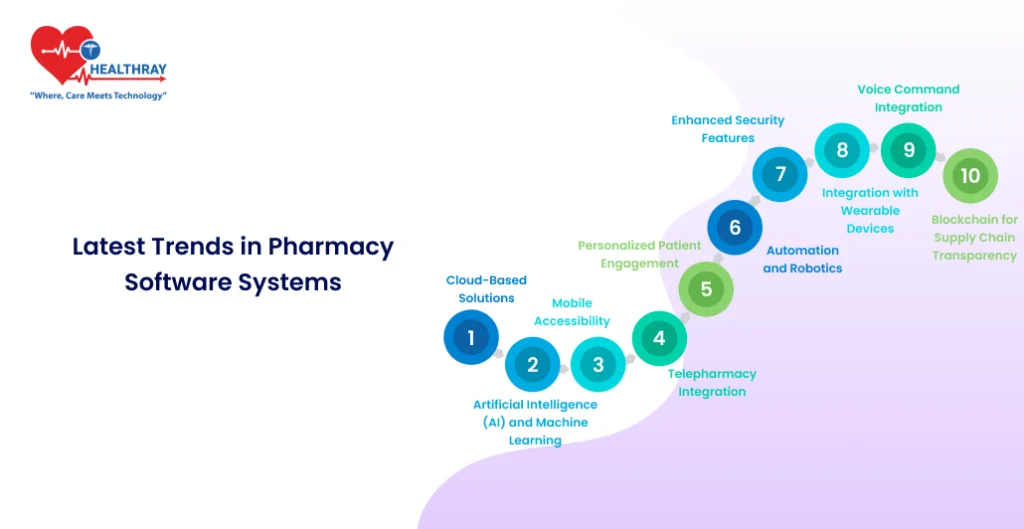
Cloud-Based Solutions
Cloud technology is increasingly altering the way pharmacies run their operations. The cloud-based Pharmacy Software Solution negates the need for expensive hardware; it is easily scalable and allows for remote access to data. This also has a great advantage for a pharmacy chain or hospital pharmacies operating in several locations. Updates are handled automatically for the security and compliance of the system.
Artificial Intelligence and Machine Learning
AI-powered tools are becoming essential in any modern pharmacy system. These analyze historical data to predict inventory needs and identify sales trends, offering optimal reorder times. AI is also behind clinical decision support systems that provide real-time alerts for potential drug interactions or patient-specific contraindications.
Mobile Accessibility
Pharmacists and staff are increasingly relying on mobile devices to perform tasks on the go. Most modern systems come with mobile apps for inventory access, prescription processing, or management of patient data from any location. This flexibility is especially useful for pharmacies that need to operate in rural areas, or during emergencies.
Telepharmacy Integration
Telepharmacy is gaining popularity, especially in areas that are far. Advanced pharmacy software supports video consultations, remote prescription management, and digital counseling, bridging the gap between the pharmacists and patients who cannot make a visit in person.
Personalized Patient Engagement
Pharmacy software is increasingly offering more tools to enhance patient engagement, including personalized medication reminders, adherence tracking, and customized health insights. These types of feature help engender trust and improve patient outcomes, a factor that is especially important for independent pharmacies.
Automation and Robotics
Automation is fast becoming a game-changer in high-volume pharmacies. Robotic dispensing systems integrated with pharmacy software make the packaging and dispensing of medication more efficient and less prone to human error. These are of great relevance for hospital and chain pharmacies dealing with large volumes.
Improved Security Features
With growing cyber threats, pharmacies need stringent security measures. Advanced encryption, multi-factor authentication, and real-time threat detection are now part of modern software systems to ensure that both patient data and business data are safer.
Wearable Device Integration
Some pharmacy software has begun to integrate with wearable health devices. This functionality allows the pharmacist to track patient health metrics, such as blood pressure or glucose levels, significantly improving the range of care provided.
Voice Command Integration
Voice-activated systems are emerging as hands-free options for the pharmacist when busy. Such features enable the staff to input information or retrieve data without interrupting their work, saving time and improving efficiency.
Supply Chain Transparency with Blockchain
The pharmaceutical supply chain seeks to ensure transparency through the adoption of blockchain technology. By integrating blockchain into pharmacy software, pharmacies can verify the authenticity of medications and track shipments to reduce counterfeit drugs.
Conclusion
The right selection of the Hospital Management System is much more than a technological decision; instead, it’s a foundational step toward improvement of efficiency, ensuring compliance, and delivering quality patient care. The features you decide on should be directed by specific needs unique to your pharmacy, whether it’s an independent shop, a chain, or one in a hospital setting.
Paying attention to user-friendliness, enhanced security, and the latest integrations with AI and cloud-based systems are how your pharmacy stays ahead. Added to this is being abreast of recent trends, including telepharmacy and automation, to keep it future-proof. Take the time to assess what is important to your pharmacy, and what challenges you meet each day. The right software won’t just solve problems-it’ll open doors to smoother operations and better patient relationships.
